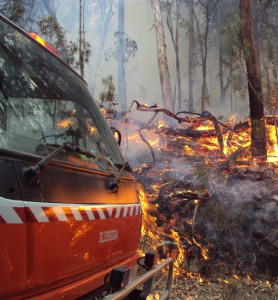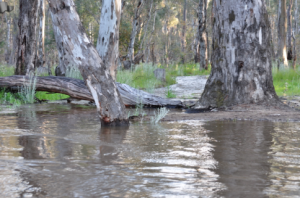Consider subscribing here for a monthly e-newsletters about Murray River issues and more… http://www.mythandthemurray.org/subscribe/
October e-news to be emailed soon.
And can anyone guess where I took this photograph… the name of the shallow lake?
By jennifer
Consider subscribing here for a monthly e-newsletters about Murray River issues and more… http://www.mythandthemurray.org/subscribe/
October e-news to be emailed soon.
And can anyone guess where I took this photograph… the name of the shallow lake?
By admin
The Volunteer Firefighters Association (VFFA), the body representing the Voice of Volunteer Rural Firefighters in New South Wales, refutes the claim by green alarmists that climate change is the cause of the recent bushfires in New South Wales.
“It’s ridiculous to blame climate change when we know there has been far worse bushfires stretching back to the earliest days of European settlement in Australia including the Black Saturday Victoria 2009, NSW Bushfires 1994, Ash Wednesday Victoria 1983, Blue Mountains NSW 1968, Black Tuesday Hobart 1967 and Black Friday Victoria 1939,” said Peter Cannon, President of the VFFA.
The VFFA is angered by comments from the green lobby groups that tackling climate change was more important than prescribed burning of forest fuels to reduce bushfire risk. The real blame rests with the greens and their ideology as they continue to oppose and undermine our efforts to conduct hazard reduction in the cooler months and to prevent private landowners from clearing their lands to reduce bushfire risk.
Hazard reduction is the only proven management tool rural firefighters have to reduce the intensity and spread of bushfires and this has been recognised in numerous bushfire enquires since the Stretton enquiry into the 1939 Victorian bushfires.
“The amount of ‘green tape’ we have to go through to get a burn approved is beyond frustrating,” says Peter Cannon.
The VFFA is calling on the NSW State Government to reduce the amount of green tape involved in planning and conducting hazard reductions, so that our Volunteer Firefighters can get on with the job of conducting fire prevention works in the cooler months to prevent the inevitable summer bushfire disasters that are now becoming a more regular feature.
The NSW State Government must also provide sufficient funding for bushfire hazard reduction works on a planned and sustained basis, including the creation of asset protection zones and upgrades of all fire trails in high bushfire risk areas.
“Remember that it’s far more cost effective, say around 66 to 100 times more cost efficient, to prevent wild fires through hazard reduction than it is to have reactionary fire response, which is what we have at the moment. With the great number of lost homes and decreasing property values through these wild fires, what then will the total fiscal amount be… when it could have all been prevented by effective Hazard reduction.”
Mr Cannon says, “The area treated by prescribed burning on bushfire prone lands needs to be increased from the current level of less than 1% per annum to a minimum of 5% per annum, as recommended by the Victorian Royal Commission and many leading bushfire experts.”
***
This is a media release from the VFFA made on October, 30, 2013.
THERE is an old saying that one of the greatest of human failings is the inability to learn from the mistakes of others. One example is that of my 2-year old grandson who, despite being warned, could not resist testing the heat of the stove, and got his fingers burned. I have noted an identical situation in the attempts at bushfire management by Australia’s new generation of forest managers.
Yet while the new managers have suffered a lot of burned fingers over the last ten years, strangely they do not seem to be learning from it. There are three simple lessons which could be learned: First, the current approach to bushfire management is not working. Second, the current approach has been tried before and it didn’t work then either. And third, there are still a lot of people around who know all this, from whose first-hand experience much could be learned. [Read more…] about Bushfire Management in Australian Forests: A Note from Roger Underwood
By jennifer
Not so long ago, the United Nation’s Intergovernmental Panel on Climate Change, IPCC, released a report about how it is now hotter, and that there is a 95% chance this has been caused by human activity.
This key finding was from just part 1 of a 3-part report. Part 2, is probably more relevant to those on the land as it will discuss “impacts” including how changes in temperature are likely to affect rainfall. Part 2 is not due for release until March 2014. 
But it is possible to get a sneak peek by reading some of the peer-reviewed papers that will contribute to the second report. According to one of these by a team from the Centre for Australian Weather and Climate Research, CAWCR, which is a partnership between the Bureau of Meteorology and CSIRO, there may be an overall 1.8% decline in rainfall in the Murray Darling Basin [1].
By jennifer
 Jennifer Marohasy BSc PhD has worked in industry and government. She is currently researching a novel technique for long-range weather forecasting funded by the B. Macfie Family Foundation.
Read more
Jennifer Marohasy BSc PhD has worked in industry and government. She is currently researching a novel technique for long-range weather forecasting funded by the B. Macfie Family Foundation.
Read more